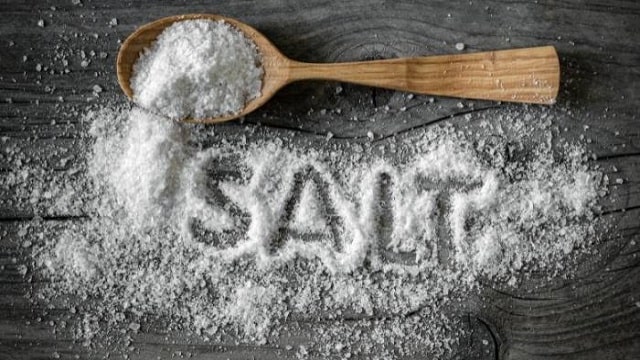Salt or sodium chloride is a fundamental ingredient in gastronomy that has been the protagonist of historical advances and upheavals. Its use makes the bite salty and enhances nuances. And although we are warned about the dangers for our health of excessive consumption, in the right measure, this mineral is essential for our health. Below, we discover everything about this ingredient: what it is, what its history is, how many types there are, how we can use it, and what benefits and contraindications we should take into account when consuming it.
What is common salt?
Common salt is an essential mineral for life. Its scientific name is sodium chloride because it is made up of crystallized sodium and chloride ions. Sodium is essential for the correct functioning of the nervous system, the muscular system, and homeostasis, that is, the regulation of fluids within our cells. Sodium is also responsible for the salty taste.
Now, if it is so necessary for the body, why is it promoted to reduce its consumption? Salt itself is a healthy source of minerals. The problem appears when it is overused. In the same way that fish was drowned in salt a thousand years ago due to the lack of refrigerators, now this same salt is added to many products in order to preserve them for longer, see meat products, sauces, or snacks among the processed foods with the highest salt content. By adding the amount of salt we add to the frying pan to that of these products, we easily exceed the maximum recommended daily amounts, which increases the probability of suffering from certain pathologies.
This is true for all types of salt: grey, pink, fine, or coarse. The answer lies in finding the right amount and having access to the healthiest and most mineral-rich versions. Salt is and will continue to be a highly consumed product, with up to 300 million tons consumed annually. Currently, its largest producers are China, India, and the United States.
Origin and history of common salt
Civilizations, disputes, and wars have been created around salt. The reason? It was the first element that allowed the long-term preservation of food. It was in the Mesopotamian era in the 4th century BC when they began to apply the technique of salting meat and fish. Salt was also used in funeral rituals in Egypt and in sacrifices and offerings among Hebrews. In the Middle Ages and with the new trade routes, gastronomic specialties appeared due to this use, more or less accidentally, such as pastrami and cecina. In the records of Christopher Columbus’s voyages, breakfast was described as a base of salted sardines accompanied by cheese and biscuit (ship bread), garlic, water, and wine.
Given its importance, it is not surprising that it was used as a currency. Roman legionaries themselves were paid for their work in salt. This payment was called “salarium”, a Latin word from which the current “salary” comes. Common salt has also been present in important socio-political episodes. Gandhi led the “Salt March” protest against the British Empire over the tax on consumed salt. It was a 300 km walk to the coast of Gujarat, India, where he would take salt from the sea with his hands followed by thousands of his followers. They were arrested and sent to prison, including Gandhi for nine months. Even so, supporters continued to take salt from the sea with their hands in broad daylight. In the end, the viceroy could do no more than abolish the tax.
The history of salt and taxes has made this essential product a constant back-and-forth. Its price became unaffordable until industrialisation brought the refined version to every table. Today, both the marine and refined versions, as well as the many other versions with their own particularities that we can find, are easily within our reach.
Types and classes of salt
Salt can be classified from many possible perspectives. Salt obtained from mechanical systems or manual processes can be classified based on its origin (sea salt, spring salt, or rock salt), its degree of refinement (refined salt or coarse salt), it’s colour (pink salt, grey salt, or black salt) as well as the particularities of the processing (kosher salt, flake salt, fleur de sel…).
On the other hand, salts that have been obtained through chemical processes and with or without the intervention of mechanical processes can be classified according to their mineral content (iodized salt, low sodium salt) or as industrial salts (monosodium glutamate salt).
Sea salt
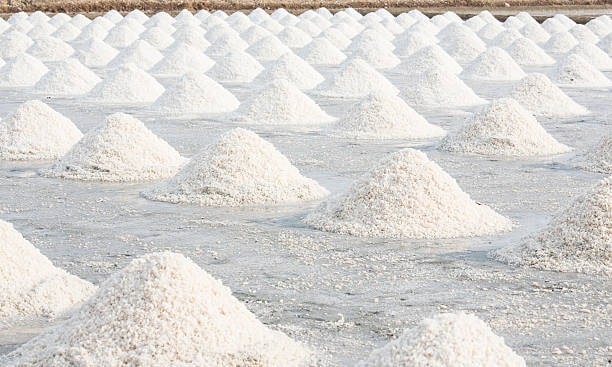
Sea salt is obtained from the evaporation of seawater. It retains more minerals and trace elements than refined salt. The thickness and texture, more or less crunchy, can vary depending on the region where the evaporation process takes place. It is one of the most common forms for daily culinary uses, stews, baking, salads, etc.
Flower of salt
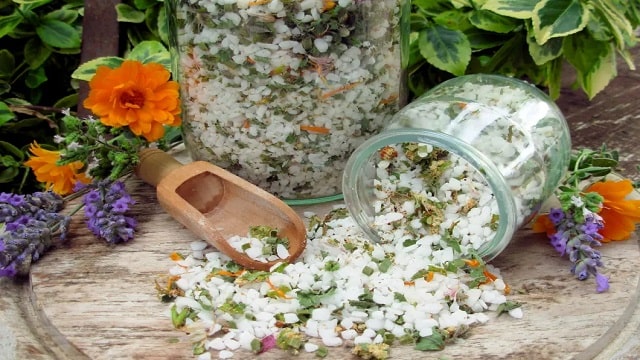
Fleur de sel is a thin layer of crystals formed on the surface of sea salt flats. It is harvested manually, unlike sea salt. Its crystals are fine, light, and dissolve gently on contact with the mouth. In gastronomy, it is used as the finishing touch to dishes and is added to chocolates and desserts in search of contrast.
Refined salt
Refined salt is salt that has undergone a process of removing impurities, which in turn leads to the reduction of naturally occurring minerals. Due to this process, its texture is very fine and refined and its flavour is more neutral than other salts. In most homes, this is the type of salt that fills the salt shaker and is used to season dishes.
Pink salt or Himalayan salt
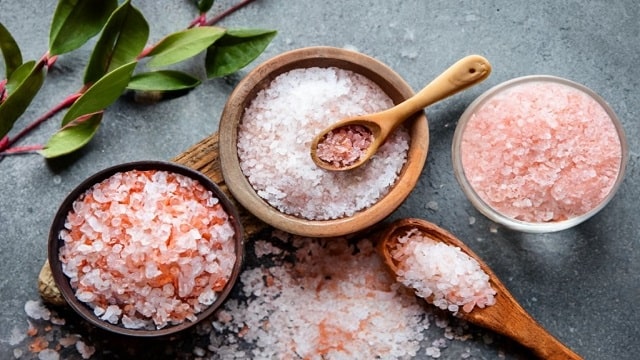
Pink salt or Himalayan salt is mined in the Himalayan mountain range in Pakistan. Its pink appearance and coarse grain make it easily recognizable. It contains iron and manganese and has a milder taste than sea salt or fleur de sel. Like flake salt, it is commonly used for the final presentation of dishes due to its beautiful appearance and color.
Black salt
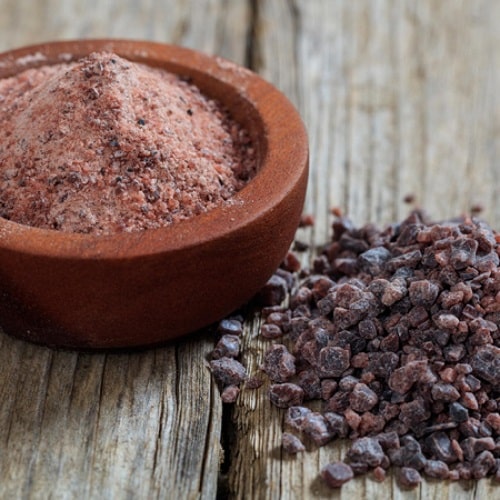
This salt is also known as Himalayan black salt or kalak namak salt. It is a type of salt found mainly in India and Pakistan. Its colour is due to sulfur compounds, which are a combination of sea salt and volcanic minerals. If there is one particularity about this salt, it is the famous comparison between its flavour and that of an egg. You will find this type of salt much more often in the repertoire of Indian cuisine (chutneys, masalas, etc.) and available in specialist shops.
Iodized salt
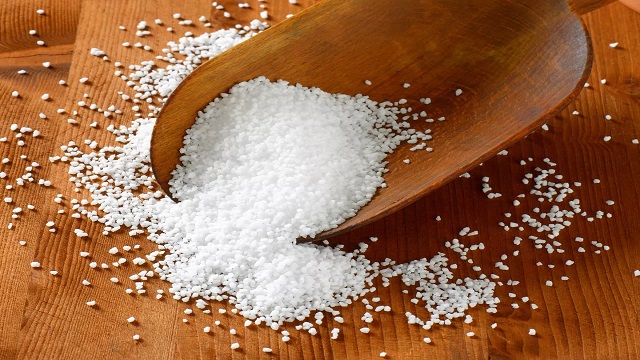
Iodized salt is made from sea salt or rock salt, such as Himalayan salt, with the addition of potassium iodide. It is made with the aim of obtaining a salt rich in iodine, an essential mineral for the thyroid and nervous system. It is used in the same way as table or refined salt.
Maldon Salt
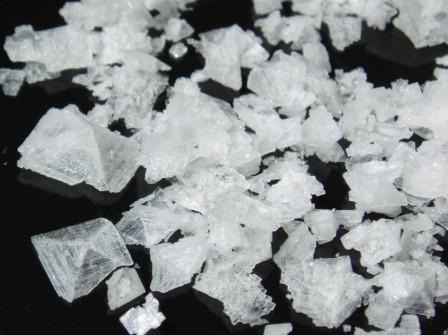
Maldon salt is a salt produced in Maldon, an English town. The water is extracted from the Blackwater estuary and the salt is obtained by evaporating the sea water. The crystals are harvested manually. It is presented in fine flakes and has a crunchy texture. The flavour is soft and delicate. Due to its attributes, Maldon salt becomes a favourite salt for finishing, as well as for sauces. Once you try the guacamole recipe with Maldon salt, there is no turning back.
Grey or Celtic salt
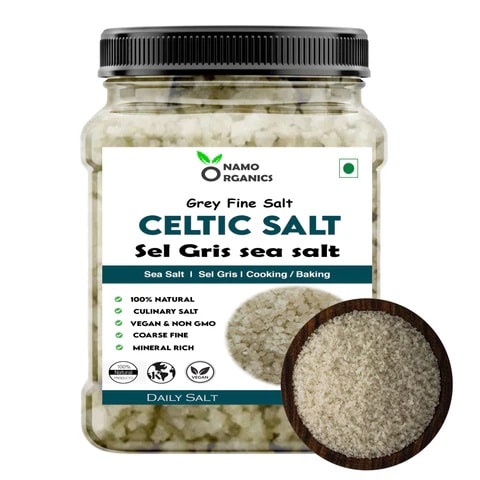
In this case, the grey or Celtic salt comes from Brittany, France. The ocean water is left to evaporate in a kind of marsh, shallow land, called “vasières” in French. During this process it obtains its grey hue. Like Maldon salt, this variety is also harvested by hand. The biggest difference with the rest of salts, apart from its hue, is the slightly moister texture. As for its culinary uses, it is used to season meats, vegetables and also on baked specialties such as pretzels.
Salt Morton
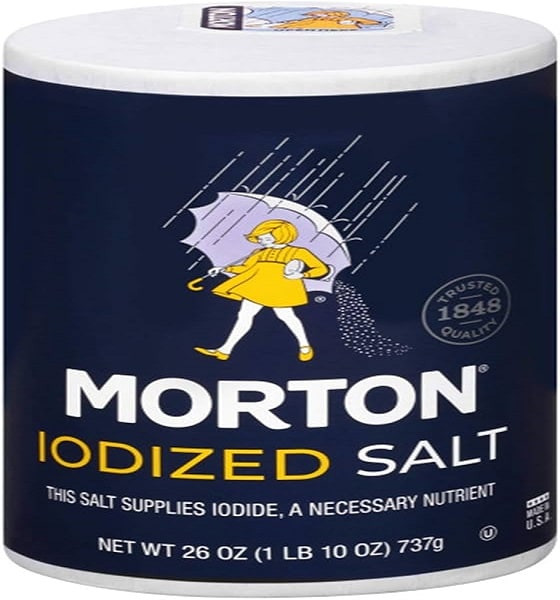
Morton salt is the commercial name for a type of American salt. This type of salt comes from underground mines and subsequently goes through a refining process. Perhaps the most peculiarity of this salt is that it is one of the most used for de-icing roads in winter and in the chemical industry for various products. According to the Ministry of Agriculture and Fisheries of Spain, it is also a type of salt with lower sodium content due to the addition of potassium chloride.
Kosher salt
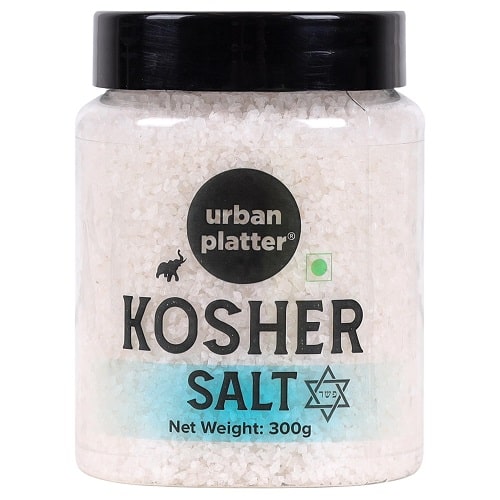
Kosher salt is a variety produced and processed under parameters dictated by the Jewish laws of Kashrut. This makes it a suitable food in the Jewish diet. Its origin can vary, although it generally comes from mines. A peculiarity is that this is the only salt used to remove blood residues from meat, as also determined by the laws of Kashrut. Whether due to its production or the supervision to which it is subjected, it is one of the preferred salts for the recipes of great bloggers and food writers in the United States, whether or not they are Jewish.
Celery salt
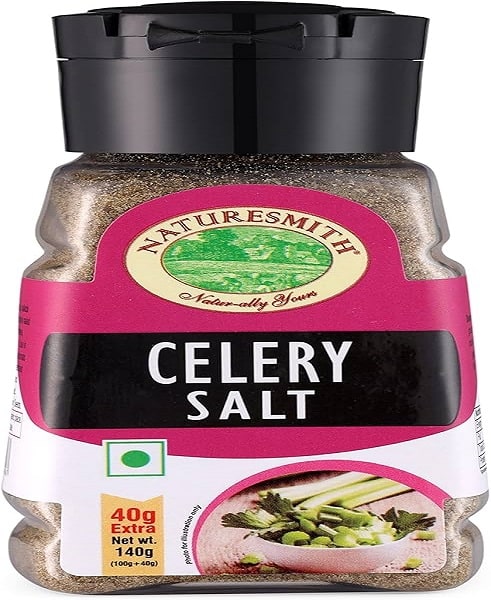
Celery salt is part of the category of flavored salts. It consists of a mixture of common salt and celery powder. In this way, it is possible to give a new flavor to dishes and helps reduce sodium consumption for those who require it. Celery salt can be used to season stews, sauces, soups, and meats. It works equally well in marinades and marinades.
Gomasio
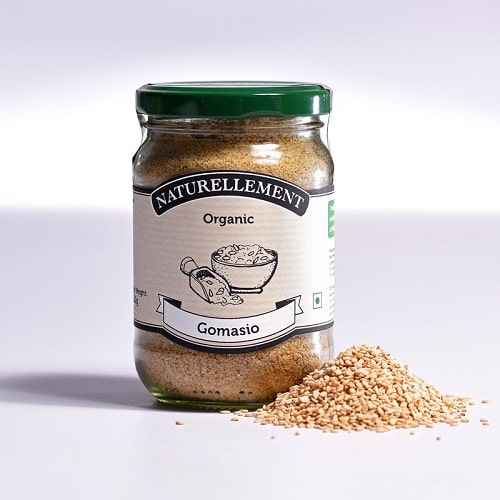
Gomasio, like celery salt, is a combination of ingredients. It comes from Japan, and the term can be broken down into “goma” (sesame) and “sio” (salt). This mixture of toasted seed and salt can really change the flavour of a dish. The toasted and crunchy touch of the seeds together with the salt give it aroma and texture. Like celery salt, gomasio helps us reduce sodium consumption. In addition, sesame is rich in minerals such as calcium, so using gomasio increases the nutritional value of our dishes.
Monosodium glutamate or sodium glutamate
Monosodium glutamate is found naturally in many foods, with algae and wheat being some of the main sources. It is obtained by fermentation and sodium hydroxide is added. It has a fine texture and is white in colour. The difference with other salts is that it does not come from a natural source and its function is not to add saltiness but to enhance the umami nuance of foods. It is one of the most used ingredients in the food industry and is responsible for the high unconscious consumption of sodium. Monosodium glutamate is also related to skin redness or headaches after excessive consumption.
Properties and benefits of common salt
As we saw at the beginning, salt is essential for the proper functioning of our body. It influences the nervous system, homeostasis, and the cardiovascular system. As long as we respect the recommended daily amounts, using salt has many benefits.
Enhance the flavor
Salt dissolves into sodium and chloride ions in the presence of water. When these ions interact with the taste buds along our tongue, they trigger a reaction. Sodium is responsible for triggering the salty signal and in the process of doing so, it activates the taste buds, which become more receptive to all flavors.
In addition, it also stimulates the salivary glands, so a greater amount of saliva allows the soluble components to dissolve and distribute throughout the mouth, reaching all areas of the taste buds.
Facilitates digestion
Hydrochloric acid secreted by the stomach is essential for the digestion of food, specifically the breakdown of proteins. The chloride in salt contributes to the synthesis of hydrochloric acid, thus facilitating digestion.
Intervenes in the regulation of fluids and blood pressure
Sodium in salt regulates the process of cellular osmosis, i.e. the entry and exit of fluid from the cells . This function is extremely important for controlling blood pressure. When salt intake is very low, extracellular fluid is also low and consequently blood volume is lower, leading to low blood pressure. On the other hand, an excess of salt causes a lot of intracellular fluid to have to exit into the extracellular space, increasing blood volume and leading to high blood pressure. Consuming salt in the right amount is important for maintaining adequate blood pressure.
Contributes to the proper functioning of the nervous system
Sodium ions are essential electrolytes for regulating nerve impulses responsible for transmitting information throughout our body. Low sodium consumption could lead to confusion, dehydration or disorientation due to the alteration of the correct functioning of the neuronal system. Fortunately, this is a very unlikely possibility since consumption usually doubles the maximum daily recommendation.
Sea salt, a source of sodium and iodine
Sea salt in particular is one of the most affordable types of salt and has the greatest health benefits. It contains more minerals and trace elements than refined salt and is a source of sodium and potassium, as well as iodine in varying amounts depending on the source, all of which are essential minerals for the proper functioning of the nervous system, cardiovascular and muscular health, and correct thyroid function.
The benefits of salt when cooking
Regarding our ingredients, adding salt during cooking attracts water from the food to the surface thanks to the mechanism of osmosis, changes its texture due to the structural changes it exerts on the proteins in the food together with the heat, and collaborates in the Maillard reaction, a reaction between amino acids and sugars responsible for the golden tone of food.
Contraindications of common salt
Salt is essential, but in moderation. Public health organizations have spent decades conducting campaigns to reduce salt consumption and exceeding the recommended 5 g of salt per day can be harmful to health in one of these ways.
Hypertension and vascular disease
Salt in moderation is essential to maintain homeostasis, that is, the body’s fluid volume for proper development of physiological functions. On the other hand, when we exceed the daily salt recommendations we risk raising our blood pressure, increasing the likelihood of suffering from heart disease. And since the kidneys are responsible for regulating this volume and excreting excess sodium as much as possible, they could be harmed in the long term.
Problems with overweight and fluid retention
Salt increases the feeling of hunger and stimulates the digestive system, which can lead to increased intake. In addition, excess salt is closely related to fluid retention, which puts stress on the cardiovascular and renal systems due to the implications mentioned in the previous point.
Osteoporosis
Excessive salt consumption may promote the excretion of calcium in the urine. This decrease in calcium may cause bone loss and increase the risk of osteoporosis. The exact mechanism is unknown, although it is believed that excess sodium may interfere with calcium reabsorption in the kidneys.
What is the recommended daily amount of salt?
The World Health Organization (WHO) establishes a maximum consumption of 5 grams of salt per day for adults and recommends smaller amounts adjusted to lifestyle for children between 2 and 15 years old. Even so, 2 g of salt per day is considered to be the ideal amount. In 2 g of salt, which corresponds to half a teaspoon, we find 2300 mg of sodium, the recommended daily amount for the proper functioning of the body.
Is salt good for people with low blood pressure?
Intuitively, we might think that salt consumption is beneficial for people with low blood pressure since its consumption is associated with an increase in blood pressure. However, only a medical specialist can confirm whether it is advisable in each particular case. This is because hypotension can be caused by a low-sodium diet, which is uncommon in European society, but also by the use of certain medications, dehydration or, for example, by thyroid gland disorders. For this reason, rushing to increase salt consumption without analysing the cause of hypotension could be completely counterproductive.
